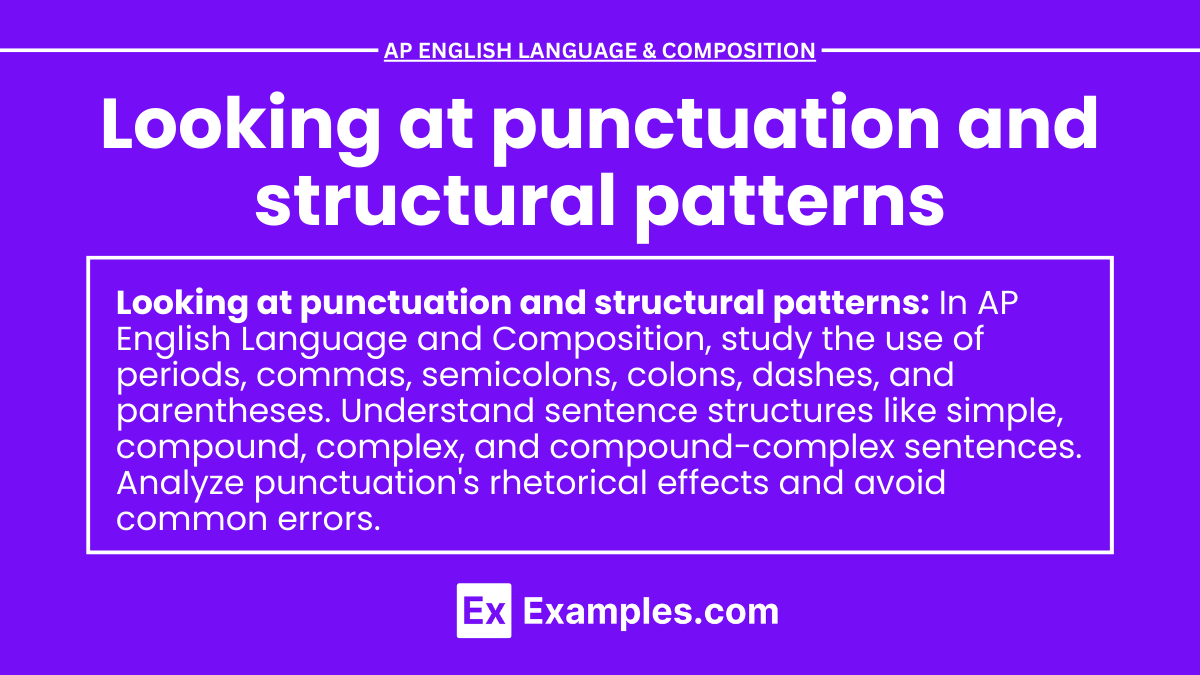In AP English Language and Composition, understanding punctuation and structural patterns is essential for crafting effective rhetorical sentences and cumulative sentences that enhance argumentative speech and argumentative writing. Mastery of these elements enables students to construct clear, persuasive, and engaging essays, which are crucial for success in the exam. By analyzing and applying various punctuation marks and sentence structures, students can improve their ability to convey complex ideas and arguments with precision and impact.
Learning Objectives
The learning objectives for mastering punctuation and structural patterns in AP English Language and Composition include effectively using cumulative sentences to add detail and depth, crafting clear explanatory essays and expository essays that inform and explain, employing rhetorical sentences to persuade and impact, developing a strong final thesis statement that guides the essay, and applying critical thinking to analyze and refine sentence structure and punctuation for clarity and emphasis.
Punctuation Marks
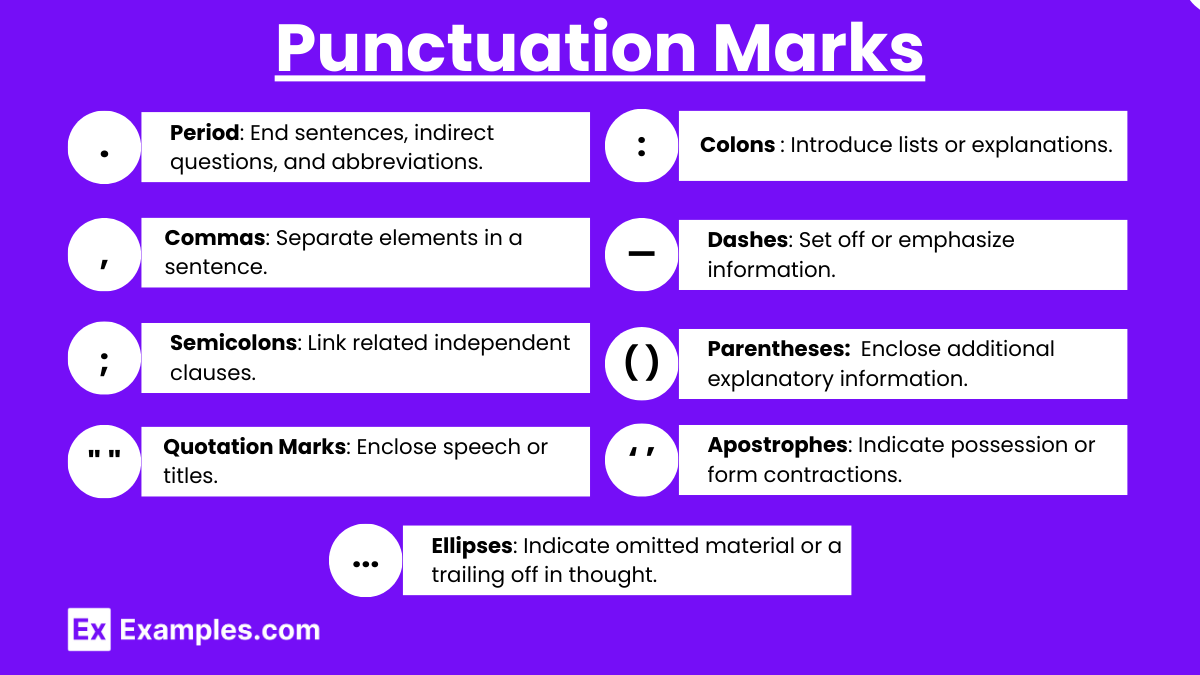
- Periods (.)
- Usage: End declarative sentences, indirect questions, and most abbreviations.
- Example: “She went to the store.”
- Commas (,)
- Usage: Separate items in a list, clauses in complex sentences, introductory elements, and non-essential information.
- Example: “After the meeting, we went out for lunch.”
- Semicolons (;)
- Usage: Link closely related independent clauses, separate items in a complex list.
- Example: “I have a big test tomorrow; I can’t go out tonight.”
- Colons (:)
- Usage: Introduce lists, quotes, explanations, or examples.
- Example: “She had three goals: to graduate, to find a job, and to travel.”
- Dashes (—)
- Usage: Add emphasis, set off non-essential information, or indicate a break in thought.
- Example: “He was late—again—so we started without him.”
- Parentheses (())
- Usage: Enclose additional or explanatory information.
- Example: “She finally answered (after taking five minutes to think) that she would help.”
- Quotation Marks (“”)
- Usage: Enclose direct speech, quotes, and titles of short works.
- Example: “He said, ‘I will be there soon.'”
- Apostrophes (‘)
- Usage: Indicate possession or form contractions.
- Example: “It’s the dog’s bone.”
- Ellipses (…)
- Usage: Indicate omitted material or a trailing off in thought.
- Example: “I don’t know… maybe.”
Structural Patterns in Sentences
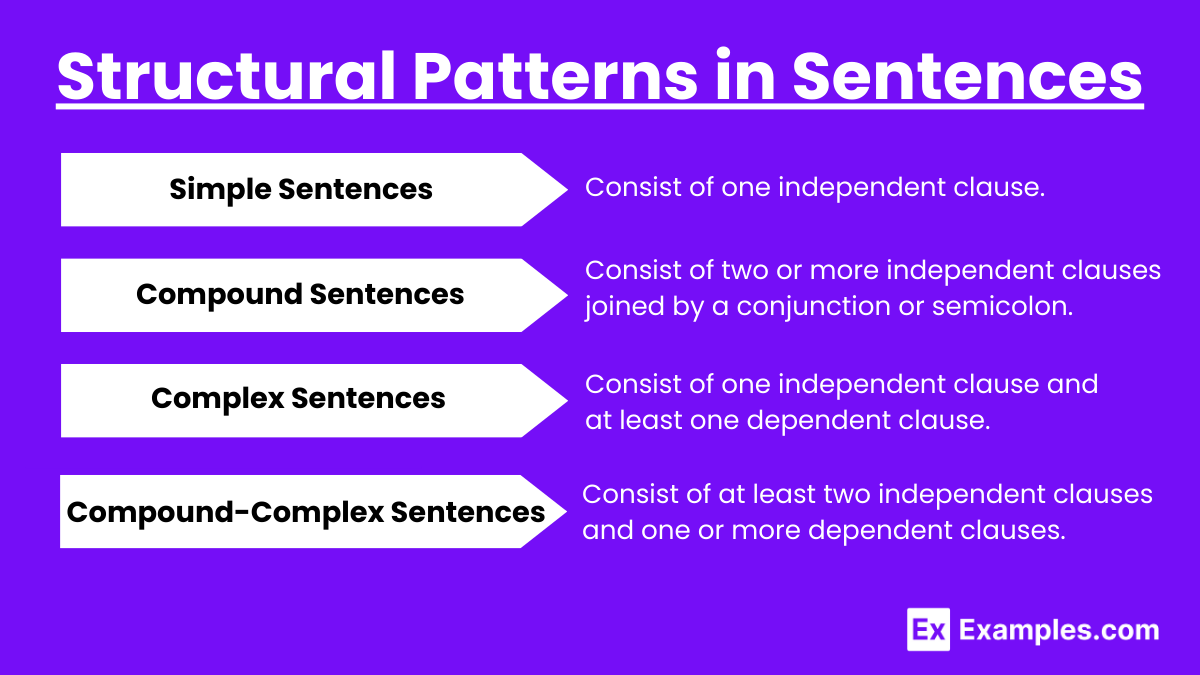
- Simple Sentences
- Definition: Consist of one independent clause.
- Example: “The cat slept.”
- Compound Sentences
- Definition: Consist of two or more independent clauses joined by a conjunction or semicolon.
- Example: “The sun set, and the stars appeared.”
- Complex Sentences
- Definition: Consist of one independent clause and at least one dependent clause.
- Example: “Although it was raining, we went for a walk.”
- Compound-Complex Sentences
- Definition: Consist of at least two independent clauses and one or more dependent clauses.
- Example: “The dog barked when he saw the cat, and the cat ran away.”
Using Punctuation for Rhetorical Effect
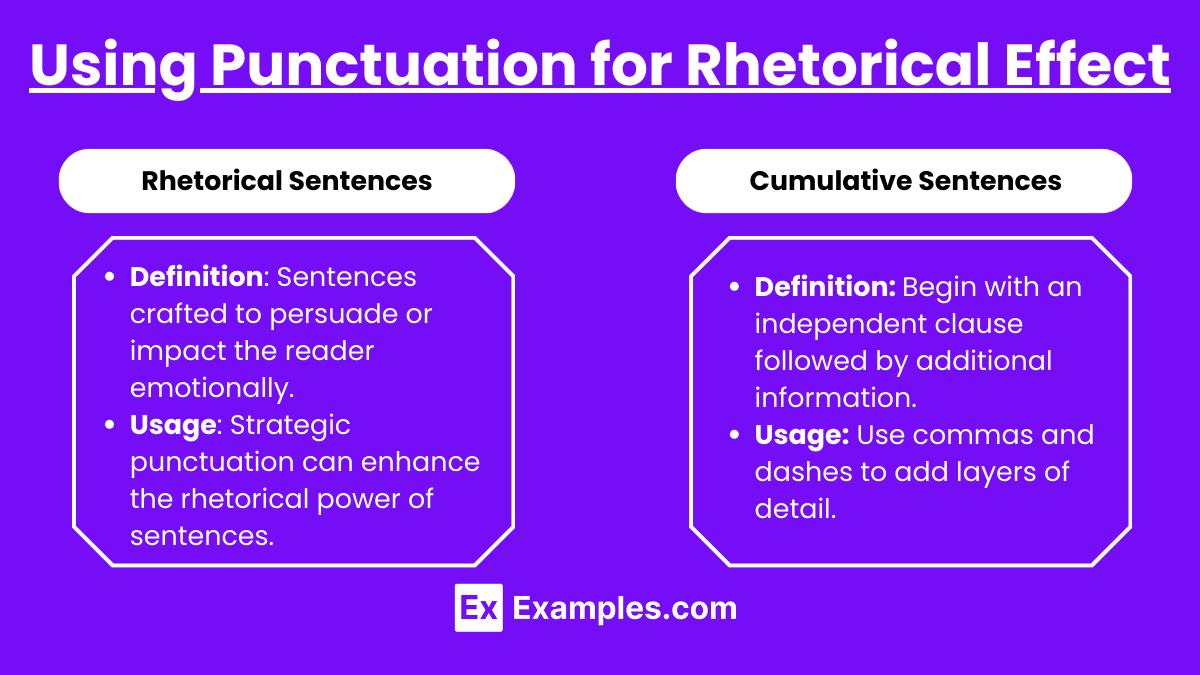
- Rhetorical Sentences
- Definition: Sentences crafted to persuade or impact the reader emotionally.
- Usage: Strategic punctuation can enhance the rhetorical power of sentences.
- Example: “Can we truly stand by and do nothing?”
- Cumulative Sentences
- Definition: Begin with an independent clause followed by additional information.
- Usage: Use commas and dashes to add layers of detail.
- Example: “The house was old, creaky, and covered in ivy, yet it stood as a testament to time.”
Analyzing Punctuation in Texts
- Close Reading
- Pay attention to how authors use punctuation to create rhythm, emphasize points, and control the pacing of their writing.
- Example Analysis: In Emily Dickinson’s poetry, frequent dashes create a fragmented, contemplative feel.
- Writing Practice
- Experiment with different punctuation marks to see how they change the tone and clarity of your writing.
- Practice rewriting sentences using different punctuation to understand their effects.
Common Punctuation Errors to Avoid
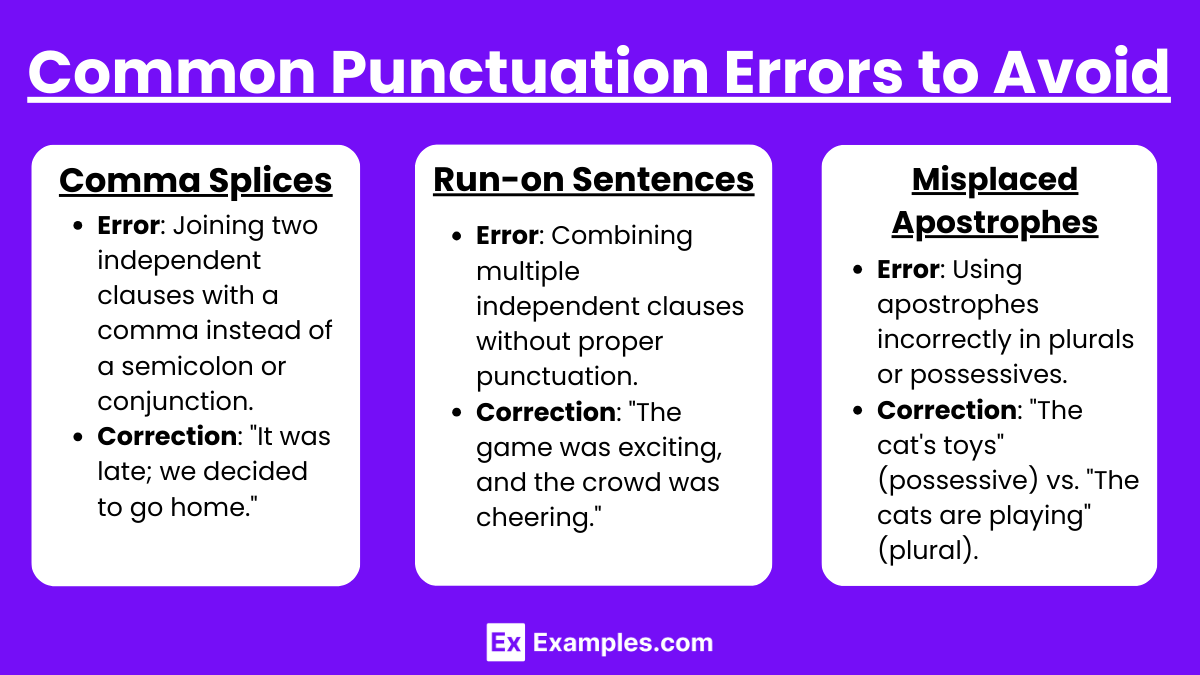
- Comma Splices
- Error: Joining two independent clauses with a comma instead of a semicolon or conjunction.
- Correction: “It was late; we decided to go home.”
- Run-on Sentences
- Error: Combining multiple independent clauses without proper punctuation.
- Correction: “The game was exciting, and the crowd was cheering.”
- Misplaced Apostrophes
- Error: Using apostrophes incorrectly in plurals or possessives.
- Correction: “The cat’s toys” (possessive) vs. “The cats are playing” (plural).
Structuring Essays
- Expository Essays
- Definition: Explain or inform.
- Structure: Introduction, body paragraphs with evidence and explanations, conclusion.
- Example: “The impact of social media on communication.”
- Explanatory Essays
- Definition: Describe a process or clarify a concept.
- Structure: Clear, logical steps or sections.
- Example: “How photosynthesis works in plants.”
- Argumentative Essays
- Definition: Persuade the reader of a particular viewpoint.
- Structure: Introduction with a thesis statement, body paragraphs with arguments and counterarguments, conclusion.
- Example: “Why renewable energy is essential for the future.”

